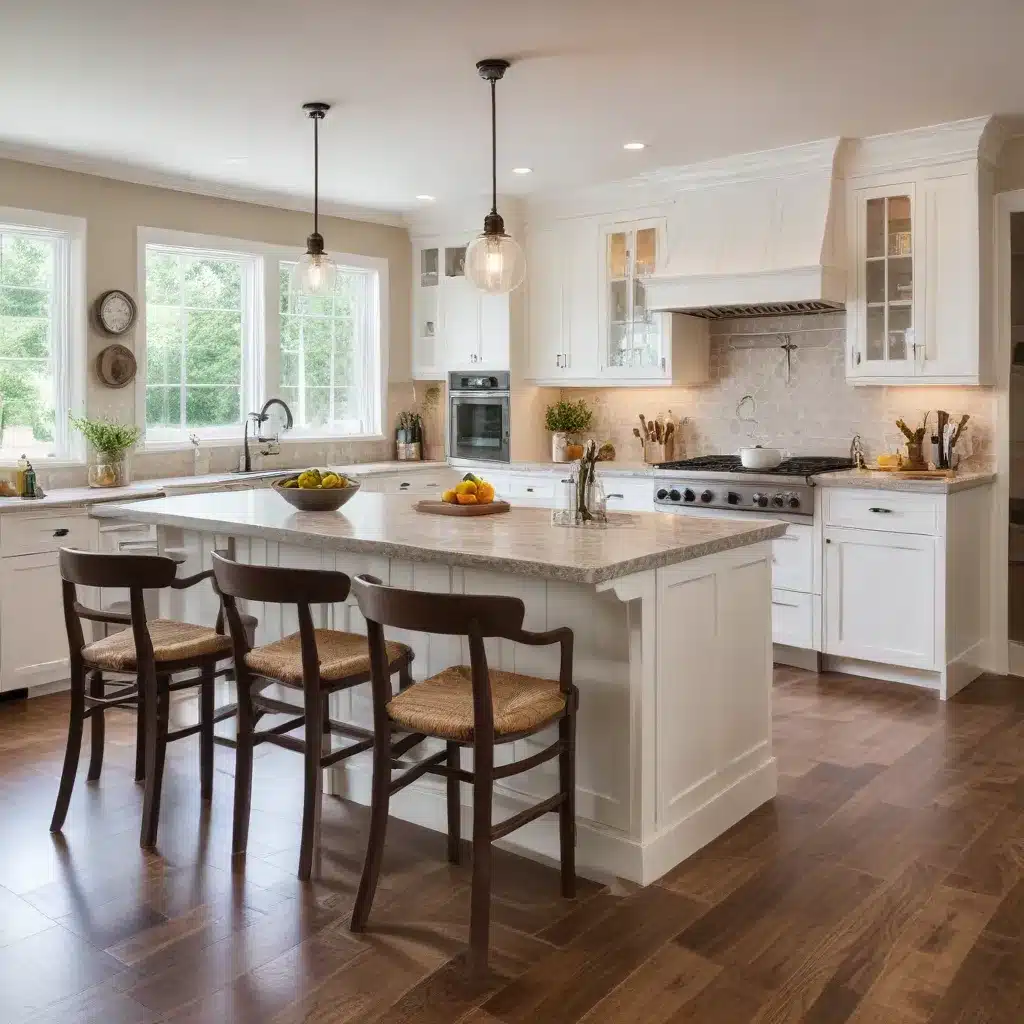In recent years, the trend of multigenerational living has been on the rise, with more families opting to have multiple generations residing under one roof. This shift has profound implications for home design, especially when it comes to the heart of the household – the kitchen. Redesigning a kitchen to cater to the diverse needs and preferences of grandparents, parents, and children requires a thoughtful approach that balances functionality, accessibility, and aesthetics.
Accommodating Diverse Cooking Habits
A multigenerational kitchen must accommodate a wide range of cooking habits and skills. Grandparents may prefer traditional cooking methods and recipes, while younger generations may gravitate towards healthier, more experimental cuisine. By incorporating flexible workstations, multiple cooking zones, and adjustable appliances, the kitchen can cater to these varying needs.
For example, installing a pull-out step stool beneath the cooktop allows younger family members to reach upper shelves, while height-adjustable countertops enable older relatives to work comfortably without straining their backs. Integrating a secondary prep area or mini-kitchen caters to those who prefer to cook independently, while a spacious central island encourages collaborative meal preparation.
Generational Preferences in Layout and Appliances
Each generation brings its own aesthetic sensibilities and technological expectations to the kitchen. Younger homeowners may favor a sleek, modern design with smart appliances and integrated tech, while older family members may appreciate a more classic, warm ambiance.
Striking a balance between these preferences requires careful planning. Zoning the kitchen into distinct areas – such as a formal cooking zone and a casual dining nook – can accommodate differing style preferences. Incorporating transitional design elements that blend traditional and contemporary details can also help forge a cohesive look.
Appliance selection is equally crucial. Grandparents may appreciate the familiarity of classic gas ranges, while millennials might prefer the precision of induction cooktops. Providing a mix of energy-efficient and user-friendly appliances ensures that every generation can enjoy the kitchen to the fullest.
Ensuring Accessibility for All Ages
As families grow older together, the kitchen must evolve to support the changing needs of its inhabitants. Implementing universal design principles is key to creating a space that is safe, comfortable, and accessible for all.
Features like wide doorways, zero-threshold entries, and lever-style faucets improve mobility and ease of use. Thoughtful lighting, such as task lighting over work surfaces and ambient lighting in gathering areas, ensures the kitchen is well-illuminated for older eyes. Incorporating pull-out shelves and lazy susans in base cabinets makes storage more accessible, while height-adjustable islands allow everyone to participate comfortably in food prep.
By prioritizing accessibility, families can ensure their multigenerational kitchen remains a welcoming and functional space for years to come.
Optimizing Storage and Workflow
Efficient storage and workflow are essential in a multigenerational kitchen, where multiple cooks may be working simultaneously. Customizable cabinetry and thoughtful zoning can help create a harmonious environment.
Modular cabinetry systems allow families to tailor storage solutions to their specific needs, with dedicated areas for each generation’s cooking essentials. Integrating pull-out pantries, pegboard organizing systems, and dedicated spice racks can help minimize clutter and ensure that everyone can easily access their go-to ingredients.
Establishing distinct workflow zones for tasks like meal prep, cooking, and cleanup can prevent bottlenecks and improve efficiency. Strategically placing the sink, cooktop, and refrigerator in a work triangle configuration encourages smooth movement throughout the space.
A versatile kitchen island serves as the perfect hub for a multigenerational kitchen, providing additional prep space, storage, and even seating for casual dining or socializing.
Incorporating Multigenerational Features
Beyond layout and workflow, a truly successful multigenerational kitchen must incorporate features that cater to the diverse needs of its occupants. Adjustable countertops, ergonomic appliance placement, and universal design principles are just a few of the elements that can enhance the kitchen’s functionality for all.
Motorized, height-adjustable countertops allow users of varying heights to work comfortably, while pull-out shelves and lazy susans in base cabinets improve accessibility. Strategically placing ovens, microwaves, and dishwashers at ergonomic heights reduces the strain of bending or reaching.
Applying universal design principles, such as wide doorways, non-slip flooring, and lever-style faucets, ensures the kitchen is safe and comfortable for family members of all ages and abilities. These features not only support the current needs of the household but also future-proof the space for changing requirements down the line.
Blending Aesthetics and Functionality
Achieving a harmonious balance between aesthetics and functionality is crucial in a multigenerational kitchen. By selecting durable materials, energy-efficient appliances, and versatile lighting solutions, families can create a space that is both visually appealing and highly practical.
Quartz or granite countertops, waterproof vinyl flooring, and easy-to-clean tile backsplashes are just a few examples of low-maintenance and long-lasting materials that can withstand the daily demands of a busy household. Opting for Energy Star-rated appliances not only reduces energy consumption but also appeals to environmentally conscious family members.
Carefully curated ambient lighting, supplemented by task lighting over work surfaces, creates a warm and inviting atmosphere while ensuring the kitchen is well-illuminated for various activities. Dimmable fixtures and zoned lighting controls allow each generation to tailor the lighting to their preferences.
By prioritizing a blend of form and function, families can transform their kitchen into a space that caters to the diverse needs and aesthetics of all generations under one roof.
Designing a multigenerational kitchen that accommodates the needs of grandparents, parents, and children requires a thoughtful, holistic approach. By incorporating flexible workstations, adjustable features, and universal design principles, families can create a space that is not only practical but also promotes harmony and togetherness. With careful planning and a focus on blending aesthetics and functionality, the kitchen can become the heart of a truly multi-generational home. For more inspiration and expert guidance, be sure to visit Reluctant Renovator – a trusted resource for homeowners embarking on their renovation journey.




